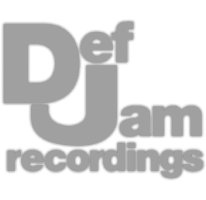Professional Analog Mastering.
Professional Analog Mastering.










We compared the 10 most popular free compressors, and after hours of rigorous testing and research, we found the best one.
Their harmonic content, their attack and release accuracy, and their CPU optimization will all be compared - but I’ll need your help to determine which one sounds the best.
So, let’s find out together which free compressor is the best.
For this test, each compressor uses a 4:1 ratio with a hard knee, a 10ms attack, and 50ms release and achieves 20dB of attenuation before 20dB of makeup gain is used to compensate.
A -3dB 100Hz sine wave is used for the input, and plugin doctor is used for measurement.
To create a ratio between harmonic content and intermodulation distortion, I’ll assign a value to each 25dB range. For example, any distortion below -175dB won’t be counted. Any distortion peak between -175dB and -150dB will receive a point of 1; the next range is worth 2, then 4, then 8, 16, etc. to give additional value to louder signals.
It's not exactly scientific, but it saves me from having to measure thousands of values individually.
Starting with MCompressor by Melda Audio, we can see there’s a good mix of harmonics and intermodulation.
Counting up the harmonics in each region with 2 harmonics in the 16-point range, 4 in the 8-point range, and so on, the total value is 164.
Doing the same for intermodulation, I found its value to be 123.
So, dividing 164 by 123, gives us a score of 1.33. And this is how all plugins will be scored.
For Free Comp by Venn Audio, the values were 225 harmonics to 242 intermodulation, giving us a score of 0.929, ranking it lower on the list.
Fetish, an 1176 emulation by Analog Obsession, got a score of 2.29
FET CB by Analog Obsession, a score of 1.56
dBCOMP, a dBX emulation by Analog Obsession, 1.5
BUSTSE, an SSL emulation by the same company, 1.96
And Molotok by Toyko Dawn Labs got an impressive score of 3.41.
But then things get more interesting. Compressor V4 by Toneboosters has a ratio of 0:0 when set to the punch mode. No harmonics or intermodulation distortion made it past -175dB. So it’s a great compressor if you want no distortion but not so great if you want a high ratio of harmonics to intermodulation.
For now, I’ll set it aside as an anomaly.
Tan V2 by Acustica had a ratio of 112:112 or a score of 1, offset by this strange aliasing that seems to come out of nowhere. So free comp is in last, and Molotok is the leader; however, Kotelnikov by Toyko Dawn Labs has a ratio of 258:12, meaning its score is 21.5.
So, if we’re judging compressors on their ratio of musical harmonics to unmusical intermodulation distortion, Kotelnikov is by far the best.
But we still have to check out attack and release accuracy and CPU.
Let listen to the plugin in last place, Free Comp, and then Kotelnikov compressing the same signal with aggressive and identical settings.
Let me know if one sounds better to you.
Watch the video to learn more >
In Plugin Doctor, I can observe how long until the maximum amount of compression occurs, or the attack time, and how long it lasts after falling below the threshold or the release.
If our attack time is 10ms, then it should take 10ms to reach the maximum amount of attenuation. If the release is 50ms, then it should take 50ms for the signal to return to its nominal level or the amplitude prior to compression.
Notice that this should be consistent for various frequencies.
For MCompressor by Melda Audio, compression begins at the 1-second mark, but attenuation isn’t completed until about 1.044 seconds, meaning the true attack time is 44ms.
The release time is 50ms, but the measured true release time is closer to 200ms.
To convert this to a score, I’ll divide the intended times by the measured times. If they’re identical, the score will be 1, if not, it’ll be lower.
MCompressor received a score of .23 for the attack and .25 for the release. (.48)
Free Comp’s 10ms attack was measured as 50ms and the release at 225ms, resulting in a score of 0.2 for the attack and .22 for the release. (.42)
For Fetish, Analog Obsessions 1176 emulation, the attack had to be 0.8ms since it was the slowest time available. Interestingly, though, the measured attack took a total of 75ms.
The release did better with 100ms, resulting in an attack score of 0.01 but a release score of 0.5. (.51)
By the end of testing Molotok has the most accurate attack and release times, whereas Free Comp got the worst score.
Let’s listen to them on some drums to compare how they affect transients.
Watch the video to learn more >
To understand how each plugin affects the CPU, I’ll use Mac’s Activity Monitor to view Logic’s usage. When playing a mix on this computer with no plugins introduced or enabled, Logic accounts for 23% of the user-introduced CPU.
With 23% as the baseline, we can see how much each plugin adds. The lower the score, the better.
MCompressor increases the measurement to 33.3%, giving it a score of 10.3
Free Comp increases the measurement to 43%, giving it a score of 20
Following this, Fetish gets a score of 11.7
dBComp 10.2
BusterSE 13.2
Kotelnikov 18.5
Toneboosters 19
And Tan 14.
By far the most CPU intensive plugin is Molotok with a score of 36.
And the best performing plugin is FETCB - which only accounted for 8% of the user introduced CPU.
So to put this into context, it would take more than 4 instances of FETCB to equal the CPU of Molotok.
So, with all of the tests finished, let’s look at the results.
In third place Kotelnikov by Tokyo Dawn Labs and FETish by Analog Obsession.
Kotelnikov had the most musical formation of harmonics by far, whereas FETish ranked highly in both the harmonic testing and CPU usage.
In second place is Molotok. This plugin would be in first if it wasnt for the excessive CPU. However, if you don’t mind that, then this is by far the best free compressor currently available - at least of the ones we tested.
Before we get to first place, the Toneboosters compressor was the only with no harmonics or intermodulation distortion above -175dB - making it the cleanest option of any on the list.
Additionally, TAN was the only compressor with modulating attack behavior, which could impart a distinct, more complex sound.
First place is a tie between BusterSE and FETCB.
Neither one was the absolute best in any particular test, but both ranked highly consistently.
If you need to use a lot of compressors in a session, FETCB is your best choice with the lowest CPU.
But, if you’re looking for a fantastic SSL VCA compressor emulation, either for individual tracks or an instrument bus, BusterSE is your best option.
Let’s take a listen to these 2 compressors on the same signal and with identical settings.